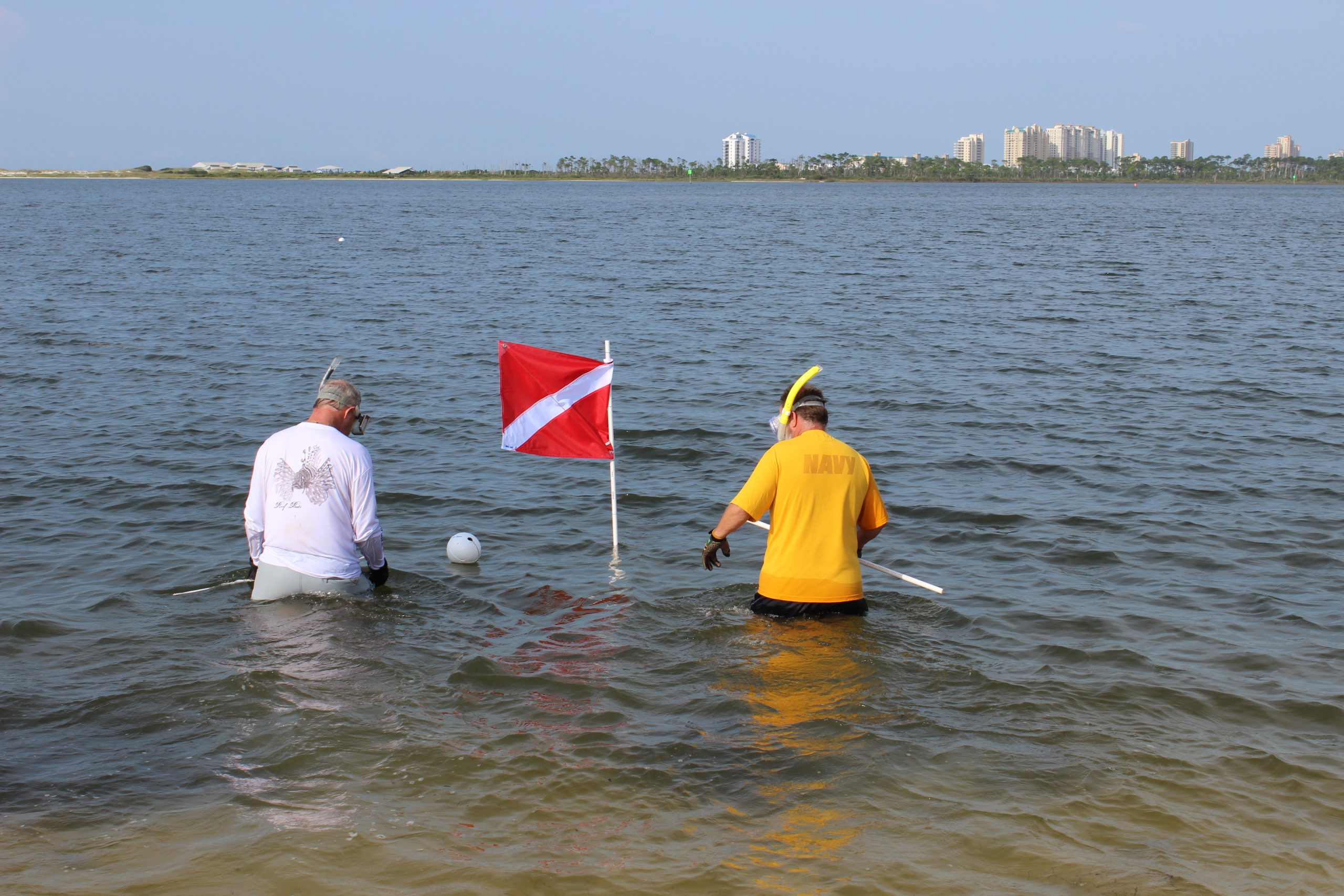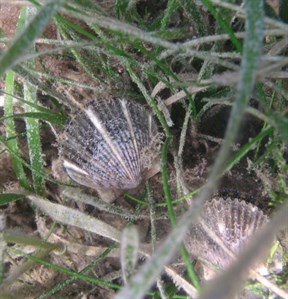As I write this, we are in the middle of our 2023 Scallop Search, an event we do each year to assess whether the scallops in Pensacola Bay are trying to make a comeback on their own. Each year I am amazed at how popular this little mollusk is. On the day I am writing, I will be working with a marine science class from the University of Southern Mississippi driving over from Ocean Springs. This past weekend I worked with two families who trailered their boat from Enterprise Alabama to participate. Those on the eastern end of the panhandle are well aware of the popularity of this creature. Folks from all over the southeast travel there to go scalloping. Many of the locals in my area, when I am training them how to do a scallop search, tell me that they head east and go scalloping every year. Some even have condos for that week and it is a large part of their annual vacation plans. And many of the locals here would love to see them return to Pensacola Bay.
This is a creature that draws a lot of attention. But most know very little about it. They know it has small eyes and can swim – actually… I have recently found that not everyone knows they can swim. We know they like grassbeds and they can be harvested in the summer. They may have done this long enough to know the prime spots within the grassbeds to search for them – their “sweet spots”. But not much more.
So… let’s meet the bay scallop.

Photo: Molly O’Connor
Its scientific name is Argopecten irradians. It is a mollusk in the class Bivalvia and the family Pectinidae. There are numerous species, and the group is found all over the world. The greatest variety of them are from the Indo-Pacific region, and in each case, they are a popular seafood. Most can swim, though erratically – they are not Michael Phelps – and they use this ability to avoid predators such as starfish, which they can see with the set of simple eyes.
There are five subspecies of A. irradians. A. irradians irradians, known as the bay scallop, or Atlantic Bay scallop (and from here is just “the scallop”) is our local variety. It is found from Cape Cod to the Gulf of Mexico. They begin life as a microscopic egg produced during the mass spawning of the hermaphroditic parents (hermaphroditic meaning each parent can produce sperm and egg). The timing of the release of gametes is triggered by warming water and usually occurs in the late summer/early fall. This early egg stage sinks to the bottom where it remains for a few weeks before hatching.
The hatched larva remain microscopic, are transparent, resemble the parents, and are called spat. The spat become part of the plankton in local estuaries but eventually return to the grass in what is called “spatfall” where they attached to the seagrasses using byssal threads. They continue to grow, eventually release from the grass, and become the scallops we all know and love. Many species of scallops can live over 20 years, but our local one only lives for one.
As most know, adult scallops have two shells (bivalves) connected at the hinge on the dorsal side of the animal. Though they do add weight to the shell, a disadvantage for a swimmer, the “ribs” provide a sturdier shell. The two shells are connected by a single, large adductor muscle, which is used to open and close the valves during swimming. It is this adductor muscle we eat when consuming scallops.
Like all bivalves, scallops are filter feeders but unlike most bivalves they lack siphons to draw water in and out of the digestive tract. Rather they lie with their valves slightly gaped and allow water to pass over them. Plankton is collected by a mucous layer and then moved to the gut by cilia (small hair-like structures) where it is digested.

Photo: Florida Fish and Wildlife Conservation Commission
Like all bivalves, scallops lack a brain as we know it but rather function using a series of ganglia (groups of nerve cells) connected to a nerve ring. These ganglia can control movement of the muscle, gills, eyes, and are connected to a statocyst, which tells the scallop how it is oriented in the water column.
There are numerous eyes aligned along the edge of each valve that can detect movement and shadows. It is believed that they use their eyes to detect potential predators and possibly initiate the swimming behavior they are famous for.
Living only one year, and reaching maximum size in late summer during spawning, scallop harvesting is regulated to that time of year in Florida. Once common from Pensacola to Miami, they are now only found in large numbers in the Big Bend region. Due to the loss of scallops in other areas, many visit the Big Bend each year to go scalloping, putting heavy harvest pressure on those stocks. There have been efforts to try and enhance the existing populations as well as restore historic ones. Here in Pensacola Bay, Florida Sea Grant works with volunteers to monitor the water quality and seagrasses, as well as assess how the few existing scallops are doing.
For more information on panhandle scallops, contact your local Sea Grant Agent at the county extension office.
 0
0
